Orchid Basics: How and When to Water Orchids
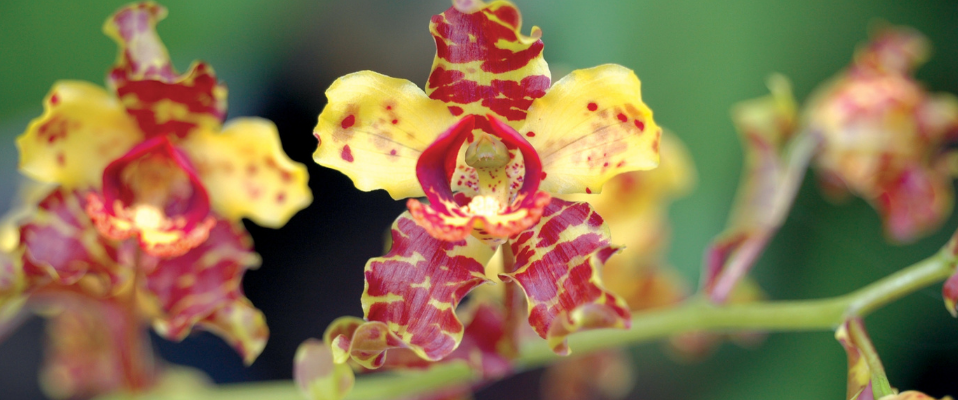
More orchids are killed by incorrect watering than by any other means. There are two separate components to proper watering: when and how.
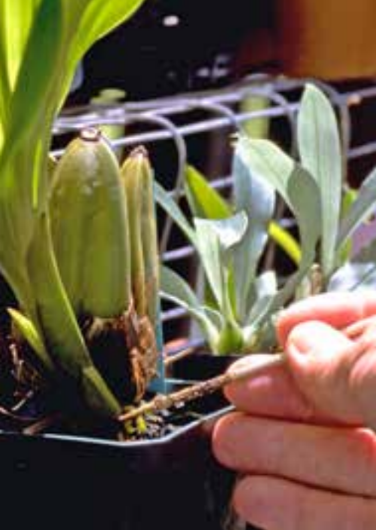
The vast majority of orchids grown by hobby growers are epiphytes, growing on trees above the ground where the light is more plentiful. These plants are adapted to having their roots exposed to light and air—so in addition to water, orchid roots need air. The central core of an epiphytic orchid root is covered with a spongy material called velamen designed to store water. When this spongy material remains wet for too long, the central core suffocates and begins to rot.
Once the roots begin to rot, the plant can no longer take up water properly and a whole host of problems begin. At worst, root rot will eventually spread, causing the death of the plant. In other cases, the loss of roots prevents the plant from absorbing sufficient water to maintain itself in good condition and the leaves will take on a wrinkled appearance. Unfortunately, the symptoms of over-watering and under-watering are superficially similar, and the tendency is to increase watering rather than inspect the roots. Over-watered roots will be brown and mushy, while those on under-watered plants will be white or gray and obviously dry.
Getting the when and how of orchid watering requires a bit of work. Let’s look first at when to water.
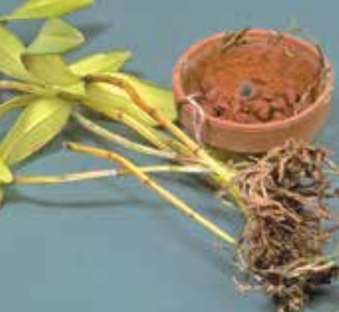
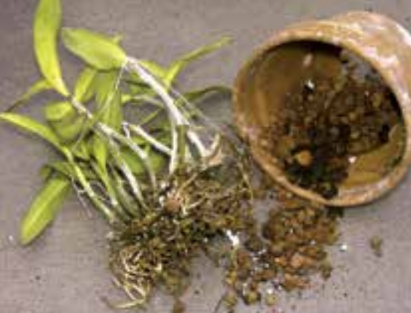
When Should I Water Orchids?
Orchids should be watered just as they dry out. This rule applies to all orchids, with slight variations depending on whether your plant has pseudobulbs (thickened stems that are designed to store water). Orchids such as cattleyas and oncidiums, which have pseudobulbs, should be allowed to just dry completely between waterings. Orchids such as phalaenopsis and vandas, which have no water storage organs, should be watered just before dryness occurs.
For vandas, this may mean daily watering during the warm summer months. Vandas and ascocendas that are properly watered will have actively growing root tips at all times. If the root tips on your plants dry up and seal over, you are not watering often enough. There’s unfortunately no magic formula for how often to water an orchid. This is because your growing area is different from anyone else’s. Humidity, air movement, potting medium (type and age) and light levels all play a role. There are several ways to determine when a potted orchid is almost dry:
- Dry pots will feel lighter when lifted.
- Clay pots feel dry.
- A wooden stake or skewer inserted into the potting mix will come out almost dry.
If in doubt, a finger inserted into the potting mix is perhaps the best tool to determine the moisture content of the mix. It will cause no harm to the plant. And remember, fresh potting mix will always dry out faster than old medium.
Shop Orchids in the Fairchild Plant Store
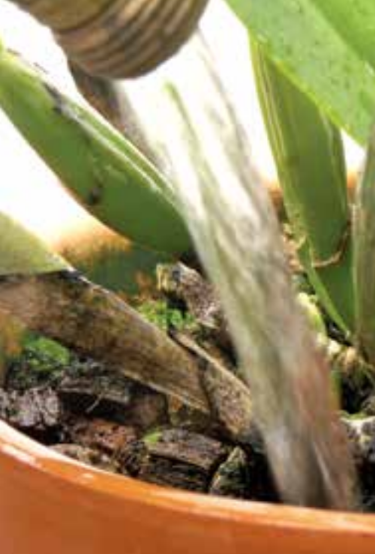
How Do I Water Orchids?
How to water is just as important to proper culture as when to water. When orchids are watered, they should be watered copiously. Place the plant in the sink and allow the water to run freely from the drainage holes. Do not use salt-softened water. At a minimum, try to thoroughly water your plants in this fashion at least once a month.
This is your opportunity to examine how the potting mix behaves. If you cannot
pour water rapidly through the pot, the potting mix is too dense and you run the risk of starving the roots for air. If you see finely divided material that looks like coffee grounds in the water coming from the drainage holes, your potting mix is breaking down. Both of these are signs it’s time to repot into fresh medium.
Finally, a couple of notes about mounted plants and those like vandas that are grown in baskets without additional potting medium. First, avoid dunking plants grown in this fashion in buckets of water. This practice very easily spreads diseases. If one plant has a disease, all those dunked in the same bucket of water will have been exposed as well. Also, two short waterings a few minutes apart are much more effective than one long watering. Once water runs off the plant, the roots will have absorbed essentially all they can at that time and excess water simply runs off to the ground.
The proper technique is to water your plants, and then a few minutes later water them again, always beginning with the first plant you watered. This allows time for the roots of the last plant to finish absorbing water before you wet them again. Roots that are completely saturated will be a solid color, while those that are not will appear mottled.
This article was authored by Ron McHatton, Ph.D., with photos by Greg Allikas, and originally appeared in the Winter 2015 edition of The Tropical Garden. Ron McHatton, Ph.D. is the American Orchid Society’s director of education and chief operating officer. He is an accredited American Orchid Society judge and has been growing orchids since the age of eight. McHatton is responsible for the editorial content and layout of Orchids magazine. Minor changes from the print version of this article were introduced to improve readability in a digital format.
